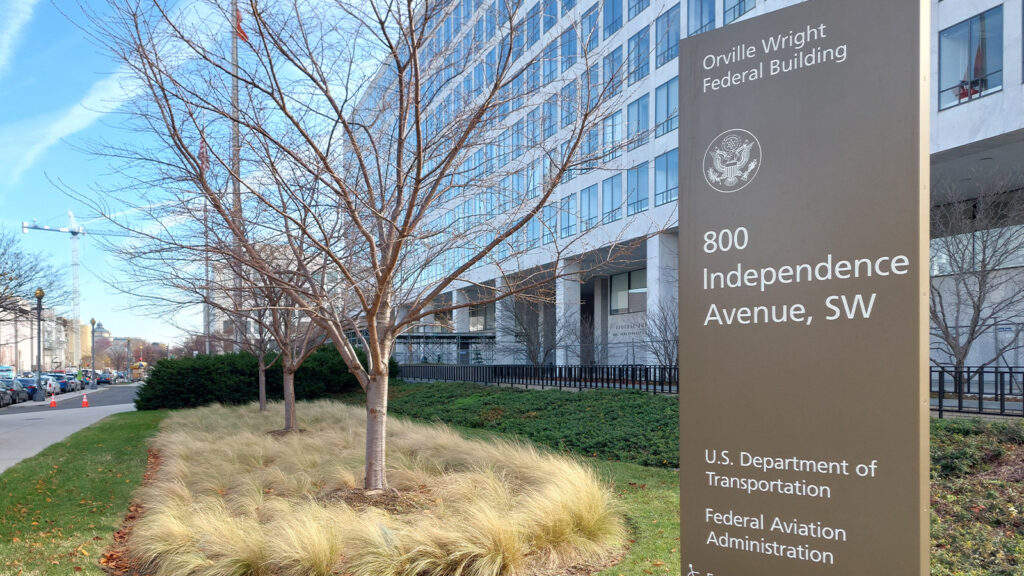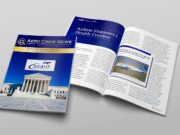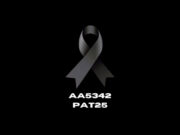
Pilots who have dealt with the FAA’s medical certification process know the medical standards are not always clear. The difference between disqualification due to an aeromedically significant condition and eligibility under the federal regulations can be slim. What is clear is that the FAA’s Civil Aerospace Medical Institute holds extensive authority to make the decision. This power can feel overwhelming, leaving many airmen confused and lost on their path to obtaining a medical certificate.
With the recent overturning of a landmark administrative law case, many are revisiting the FAA’s agency power for the first time in decades. Has anything changed in the aeromedical division with the new developments? To answer that, we must first provide some background.
The Chevron Doctrine
In 1977, Congress amended the Clean Air Act (CAA). The amendment required any state that had not attained national air quality standards, as established by the Environmental Protection Agency (EPA), to set up a permit program to regulate “new or modified major stationary sources” of air pollution. A permit for a new or modified major stationary source could not be issued unless strict conditions were met. For context, stationary sources are buildings or structures like power plants or oil refineries that release air pollutants. The problem was the amended CAA did not explicitly define, nor did the legislative history behind the amendment directly indicate, what Congress considered to be a “stationary source.”
In 1981, the EPA promulgated new regulations that allowed a state to adopt a plantwide definition of the term “stationary source” which, in essence, permitted existing plants with multiple pollution devices to install a single piece of equipment without having to meet the strict permit conditions. This sparked the controversy in Chevron, U.S.A., Inc. v. Natural Resources Defense Council, Inc. which was eventually argued in front of the Supreme Court of the United States in 1984. The major issue was whether the EPA’s actions and interpretation of “stationary source” were legal. What resulted was a landmark decision that would come to rule administrative law cases for decades and create the influential “Chevron Doctrine.”
The Chevron Doctrine governed how a reviewing court examined a federal agency’s interpretation of the statutes that said agency (the EPA, FAA, Department of Commerce, etc.) administers. The Chevron Doctrine implements a two-step framework:[i]
- The “reviewing court must first assess ‘whether Congress has directly spoken to the precise question at issue.’ If, and only if, congressional intent is ‘clear,’ that is the end of the inquiry.” I.e., Congress’ clear intent behind the statute is adopted.
- If, however, “the court determines that ‘the statute is silent or ambiguous with respect to the specific issue’ at hand, the court must, at Chevron’s second step, defer to the agency’s interpretation if it ‘is based on a permissible construction of the statute.’” I.e., the agency’s interpretation of the statute holds, even if the reviewing court reads the statute differently.
The Supreme Court in Chevron v. NRDC ultimately concluded 1) Congress had not specified their intention with the term “stationary source” (i.e., they were silent on the matter), and therefore 2) the EPA’s interpretation was adopted as it was a permissible construction of the statute by the EPA’s administrator.
Loper Overturns
For 40 years the Chevron Doctrine mandated that the reviewing courts defer to agency interpretations of an ambiguous statute if their interpretation was reasonable. The doctrine was narrowed over time to clarify its scope, such as only allowing deference to the federal agency that oversaw the statute in question. For example, only the FAA, not the EPA or others, can interpret aviation related statutes. The Chevron Doctrine was divisive, with some parties agreeing that the agency with expertise in the area rightfully had the benefit of the doubt, while others called for the courts to be the authority and exercise their judgment in each case.
The Chevron Doctrine’s reign ended in June of 2024 with the decision in Loper Bright Enterprises v. Raimondo. The case was initially brought by a group of commercial fishermen regarding at-sea monitoring programs but was eventually taken by the Supreme Court to openly consider whether the Chevron Doctrine should be overruled. The Supreme Court’s Opinion in Loper provided a thorough examination of the history of agency authority in the U.S., the separation of powers, the Administrative Procedure Act (APA), and the reasoning behind the Chevron Doctrine. In summary, the Supreme Court concluded:[ii]
Chevron is overruled. Courts must exercise their independent judgment in deciding whether an agency has acted within its statutory authority, as the APA requires. Careful attention to the judgment of the Executive Branch may help inform that inquiry. And when a particular statute delegates authority to an agency consistent with constitutional limits, courts must respect the delegation, while ensuring that the agency acts within it. But courts need not and under the APA may not defer to an agency interpretation of the law simply because a statute is ambiguous.
What Do Chevron and Loper Have to Do with Pilot Medical Certification?
The administrator of the FAA is given general authority under the United States Code to issue airman certificates. Statutes related to airman medical certification, including the delegation of the administrator’s authority and the medical standards, are outlined in Title 14 of the Code of Federal Regulations Part 67 (14 C.F.R. § 67). When a pilot is denied based on the FAA’s interpretation of these standards, they can become understandably frustrated as there is often vague statutory language as the basis for the denial and little to no explanation from the FAA. Given the recent Loper decision, the question has arisen whether the FAA’s interpretation of the statutory medical standards in relation to a pilot’s case will be granted the same level of deference it held during the Chevron Doctrine years?
The short answer: we aren’t sure. There may be no uniform application moving forward. It is important to note that with any legal appeal, there are many case-by-case variables that sway the outcome (medical history of the applicant, professional medical opinions on file or lack thereof, specific regulations in question, etc.). Time will tell how the review of medical certification decisions will be affected as the Loper decision matures out of its infancy and more cases are argued in the courts. The hope is that decisions will be more fluid and individualized to the case with the fall of the Chevron Doctrine and the lessening of an agency’s deference.
Unfortunately, there is language in the statutes that strongly indicate the FAA, specifically the Federal Air Surgeon (FAS), will continue to have broad interpretive authority. Recall that Loper proclaims that agencies are no longer given deference for their interpretations of ambiguous statutes. Loper still requires that “when a particular statute delegates authority to an agency consistent with constitutional limits, courts must respect the delegation,” and many medical standard statutes explicitly state that the decision is “at the discretion of” the FAS. For example, 14 C.F.R. § 67.107(c) states:[iii]
No other personality disorder, neurosis, or other mental condition that the Federal Air Surgeon, based on the case history and appropriate, qualified medical judgment relating to the condition involved, finds—
(1) Makes the person unable to safely perform the duties or exercise the privileges of the airman certificate applied for or held; or
(2) May reasonably be expected, for the maximum duration of the airman medical certificate applied for or held, to make the person unable to perform those duties or exercise those privileges.
Notably, this allocation of authority is also explicitly given to the FAS for special issuance of medical certificates under 14 C.F.R. § 67.401.
These specific delegations to the FAS suggest the intention of Congress was to place the FAS directly in the position of the ultimate decision maker for medical certification, not the courts. This is consistent with constitutional limits and the authority of the FAA to maintain safety in the national airspace system by determining aeromedically significant conditions. Accordingly, it appears that Loper’s decision will not be the broad overhaul in medical certification that many thought, at least initially.
What Can We Do?
Despite the explicit delegation to the FAS, Loper also made it clear the courts must still ensure “that the agency acts within [its delegation].” Before, there was a pervasive attitude adopted by the courts of deferring to agencies due to the Chevron Doctrine’s longstanding precedent. Perhaps moving forward with Chevron overturned there will be more room to argue. As the D.C. Circuit Court of Appeals in Erwin v. FAA, a case involving FAA medical certification and a potential alcohol dependence finding under 14 C.F.R. § 67, previously decreed:[iv]
Granted, an exegesis may not be necessary but the FAA has not provided even one sentence demonstrating a “rational connection between the facts found and the choice made.” . . . It argues that it may rely solely on the positive test and Erwin's history of alcohol dependence but ignores Erwin's evidence scientifically attacking the positive test, notwithstanding the withdrawal regulations explicitly provide that a request for review “may be accompanied by supporting medical evidence.” . . . In our view, Erwin's reconsideration request and accompanying evidence . . . merits the FAA's explicit consideration. Its Final Order does not do so. And the FAA is a repeat offender. As we have previously told the agency, it “cannot simply declare its ‘expertise'; it must exercise that expertise and demonstrate sufficiently that it has done so else we have nothing to review much less defer to.”
Loper’s overruling is a step in the right direction to probe more into the paternalistic, “declaration of expertise” culture rampant in the FAA’s medical division. However, pilots and advocates must continue to remain vigilant and appeal certification decisions to keep the FAA in check. The FAA’s standing as a safety-sensitive government agency and the statutory delegations to the FAS do not give the medical division a “blank check” to determine the aeromedical significance of a condition without proper, reasonable review and explanation.
Furthermore, to maintain progress, the aviation community can support legislative initiatives aimed at refining the medical standards. In April 2024, the FAA’s Pilot Mental Health Aviation Rulemaking Committee (ARC) published 24 recommendations for aeromedical reform and mental health. These recommendations remain unimplemented. However, two proposed acts are currently under review after introduction into the House of Representatives in 2024: the Aviation Medication Transparency Act of 2024 (H.R.9243) and the Mental Health in Aviation Act (H.R.9687). Implementing new laws that provide more detailed medical standards and clarifying Congress’ intent would make it harder for the FAS and other reviewers to deny cases without proper reasoning (i.e., based on simply declaring expertise). This is especially true in mental health cases where the standards, like 14 C.F.R. § 67.107(c) quoted above, are vague. Legislative action directly delegating the bounds of discretionary authority for the FAA is the next step in continuing the shift of deference on a pilot’s health and certification decision towards the opinions of the pilot’s medical providers (who are intimately familiar with the pilot’s health) and away from the strict, isolated FAA review we currently have.
For more information on how to support these and other legislative initiatives, visit the Pilot Mental Health Campaign’s website at https://www.pmhc.org/. For legal assistance with your medical certification case, visit Ramos Law’s Aviation Division’s website at https://www.ramoslaw.com/aviation-division/.
[i] Language of the two-step framework is directly cited from Loper Bright Enterprises vs. Raimondo, 603 U.S. 369, 379 (2024).
[ii] Loper Bright Enterprises vs. Raimondo, 603 U.S. 369, 412-413 (2024) (emphasis added).
[iii] Emphasis added.
[iv] Erwin v. FAA, 21 F.4th 154, 161 (2021) (emphasis added).






































































